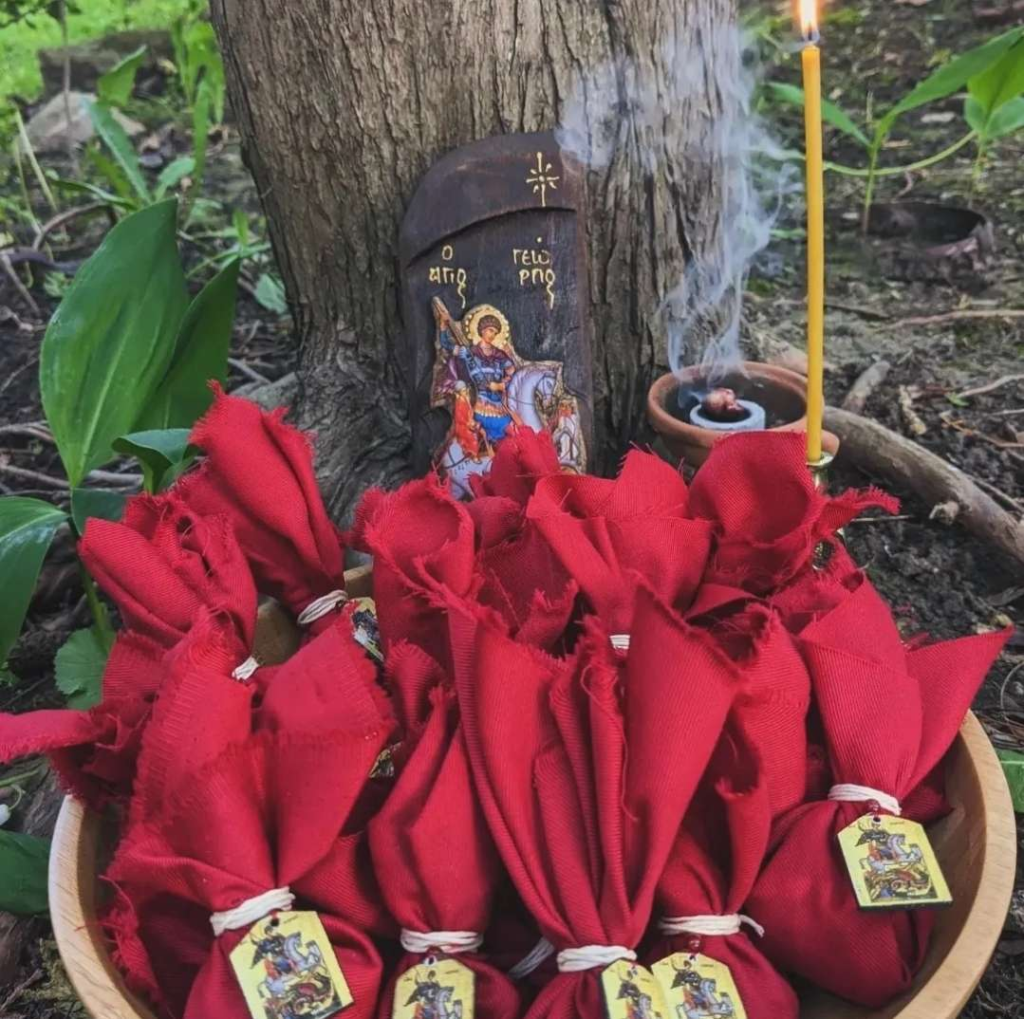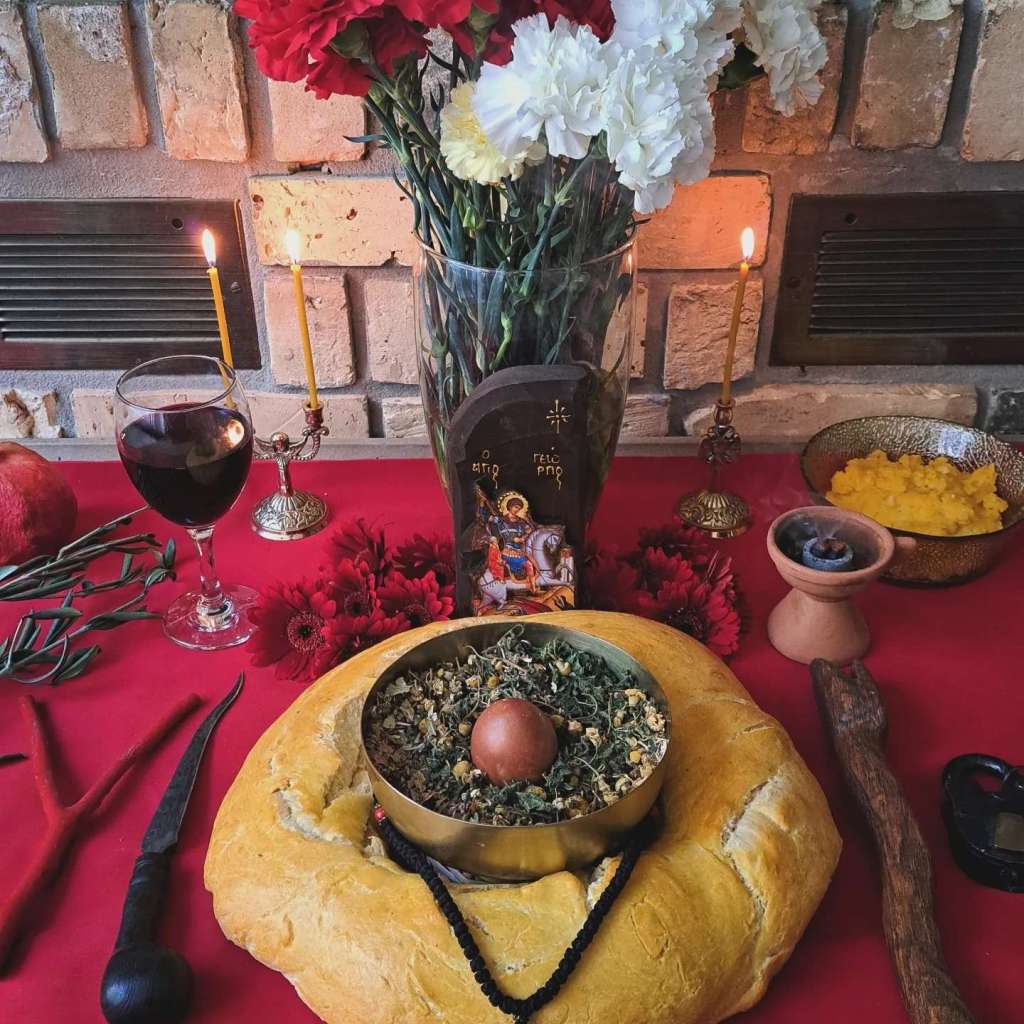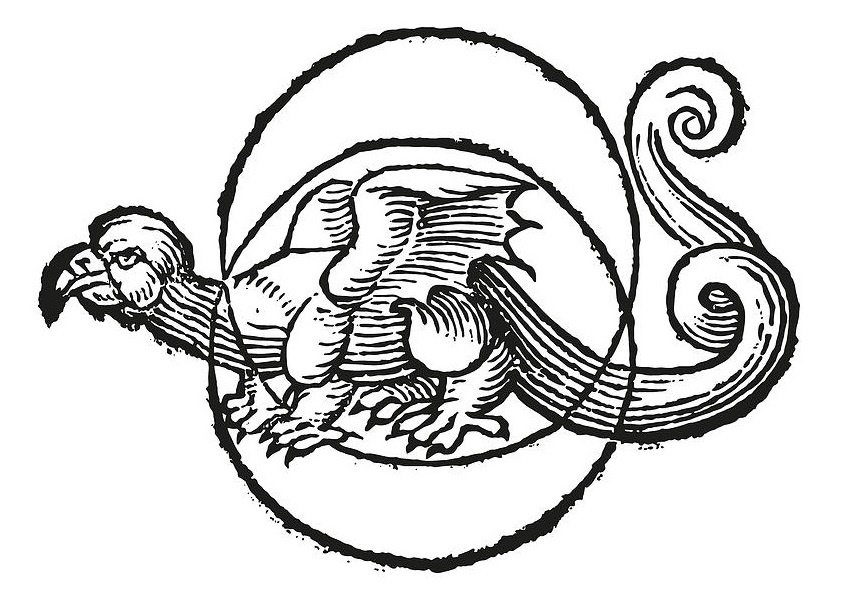By the red cape of the soldier-martyr,
By the red wings of the adversary underfoot,
By the red-drenched spear piercing its maw,
The Charms of the Victory-bearer are born, baptized, and bled.

These potent bundles were first birthed on May 6th, the Orthodox feast of St. George, which this year happened to be the day immediately following Easter. I’ve much joked with friends about how much “longer” Lent felt this year in light of Easter being May 5th, but this too came with its own advantages. That the eve of Đurđevdan (St. George’s Day) was itself Easter provided the perfect folkloric confluence for a number of the key ingredients which went into crafting these sorcerous allies—fleetfooted, valiant, and unrelenting as the martyr himself.
Having collected the necessary herbs either on the eve or at dawn on the feast proper, retrieving each with the appropriate offering left in turn and through the auspices of a bajalica or basma (oral charm) specifically used on St. George’s Day for those very plants themselves, I began the core powder within the first hours of the feast. The shell of first red egg of Easter—a prized ingredient within the Balkan folk tradition—was crumbled and left to soak among the blood clots of an offered rooster, consecrated with the Jesus Prayer and given veneration through Good Friday, Holy Saturday, and Easter Sunday all. On the martyr’s day proper, I baked the kravaj or kravajče, a solar bread intended to mimic the wreaths which would crown cattle for protection, the first sacrificial lamb for protection, and the milk buckets that would receive the first milking of St. George’s Day for fertility. Across numerous villages, and most famously recorded in Vrtovac—a village in Serbia that has been much-studied for its detailed St. George’s Day customs of sacrifice and fertility magic—this bread would be wrapped in geranium, sprinkled with salt, and placed by the nearest river as an offering; or alternatively divided up amongst anthills so that the ants themselves may “lock up” the fertility gathered to protect it from negativity and the Evil Eye.
At the same time, bread baked specifically for a saint’s feast is itself a powerful fetish to be used in the creation of charms. I was trained to add a little piece to each charm I make (a ritual bread that was prayed over for many hours was a key component in the Master of the Wolves charms we released last year), and this case was no different. The rest of the kravaj was divided up between spirits, friends, anthills, tree hollows, the dead, and a river, each with a corresponding oral charm spoken over the piece as Thursday Salt was sprinkled over its resting place, tied to its post with white horse’s hair.
As an additional offering to the martyr and the spirits of his entourage, I cooked belmuž—a sheep’s cheese cornmeal porridge—and gave portions to each of my assisting familiars and to the holy saint himself. The banquet was laid over a red cloth that was consecrated as his cape, fumigated in red Orthodox St. George’s incense I brought back with me from my last trip to Greece, and sprinkled with wine, rooster blood, sheep’s milk, and holy water with sprigs of basil and plantain. When the time came to make the charms themselves, it was this cloth that was divided into the 21 squares that would host the cores birthed on his feast.

Herbal materia, both freshly gathered and dried from previous corresponding saint feasts, were combined within a vessel along with personal fixed star powders made in my tradition, specific dirts corresponding with the nature of these charms, and the first red egg of Easter, which had itself undergone numerous rituals upon Christ’s rebirth. As the serpents of Aldebaran and Regulus were massaged for their dew, so too were the armies of St. George supplicated, in memory of his eternal triumph over the aždaja and his folkloric allyship with the zmaj. Propitiating the saint and the gods he masks alike, the raw powder was left incubate within the kravaj, veiled by his bloodied cloak against the glare of any stars not pacted to this working.
Finally, once the raw bundles passed their requisite three omens of manifestation—that they were indeed alive and bringing victory unto their bearers—I was given license by my spirits to bind them still. All three of us at With Cunning & Command and The Frightful Howls You May Hear take efficacy and results extremely seriously; nothing we offer to the world can be sold before it has succeeded in its tests of fealty and power. The trials these cores underwent were in line with their intended use: the overcoming of obstacles, the germination of fertility, the destruction of nightmares, the evil eye, and any other such spiritual malady, and the ultimate triumph of their carrier in matters of competition. Be they deployed for the protection of fertility (in matters of one’s own, those of animals and plants, or even those of other magical workings so that they may bear fruit), the defeat of enemies in matters where only one may prevail, or the destruction of jealous gazes, lingering spirits with ill intentions, or stray miasma and malefica brought home underfoot, the Charms of the Victory-bearer are the white-hot flash of the spear, the crack of the celestial whip, the hooves of the thundering hero-steed crushing each viper before it ever slinks across the threshold.
The base mixture includes allies such as basil, linden, geranium, nettle, chamomile, plantain, dandelion, and many other potent herbs collected in the dark such that they cannot be named. Dirts from the graves of 23 soldiers, 23 anthills, and 23 crossroads, as well as dirt from the village Başköy/Potamia where St. George was said to have been born, are combined with powders of Aldebaran and Regulus created in a manner taught to me in my tradition, as well as a more conventional Sun in Aries powder elected by Salt. Serpent bone, St. George incense, white beans from a chart that approved these charms with the most blessed omen of the Three Stars, and many more implements made their way into the bundles, which were then tied with red thread, a piece of carnelian, and a small pocket icon of St. George, finally bound over with white waxed linen thread. Each knot had the appropriate oral charm breathed into it, an offering of air bestowed as the final gift before they were once again perfumed in incense and left to breathe the sunlight for the first time since the feast.
Having received countless prayers, rich offerings, and diligent attention to omens, auguries, and folkloric expressions of St. George’s might in nature, these charms are finally available for purchase. They may be kept in one’s backpack or purse, nestled in their place of work, placed by the hearth or on appropriate shrines, or hung by the main door to your home. Give them a candle (white, red, or beeswax) and a shot of vodka, brandy, or whiskey once a month, preferably on the full moon to keep them refreshed and spry. These are workhorses and soldiers, aggressively targeting areas of weakness and conquering obstacles in your path. If you have an enemy you need to triumph over, or are looking to be the victor selected from among a pool of candidates, place the charm with a lit candle over a copy of your application with your petition written over it in red. Tuck the charm by your pillow or hang it over your bed to protect against nightmares and vampiric spirits, or to assist in conception and sexual virility. Gift the bundle to your protective spirits to act as arms for them, becoming a battery of power for them to wield against disease, poverty, malefica, and loss in the pursuit of securing steadfast agency.
If you’d like to purchase one for yourself, please click the link below. Shipping is included within the price. They will be mailed out within a week of purchase and a tracking code will be e-mailed to the PayPal address used to buy them.
All St. George’s Charms of the Victory-bearer are sold out. Thank you for your patronage!
It is not my hand that cuts these cords, but the hand of St. George upon his holiest day. Amen, amen, amen.
